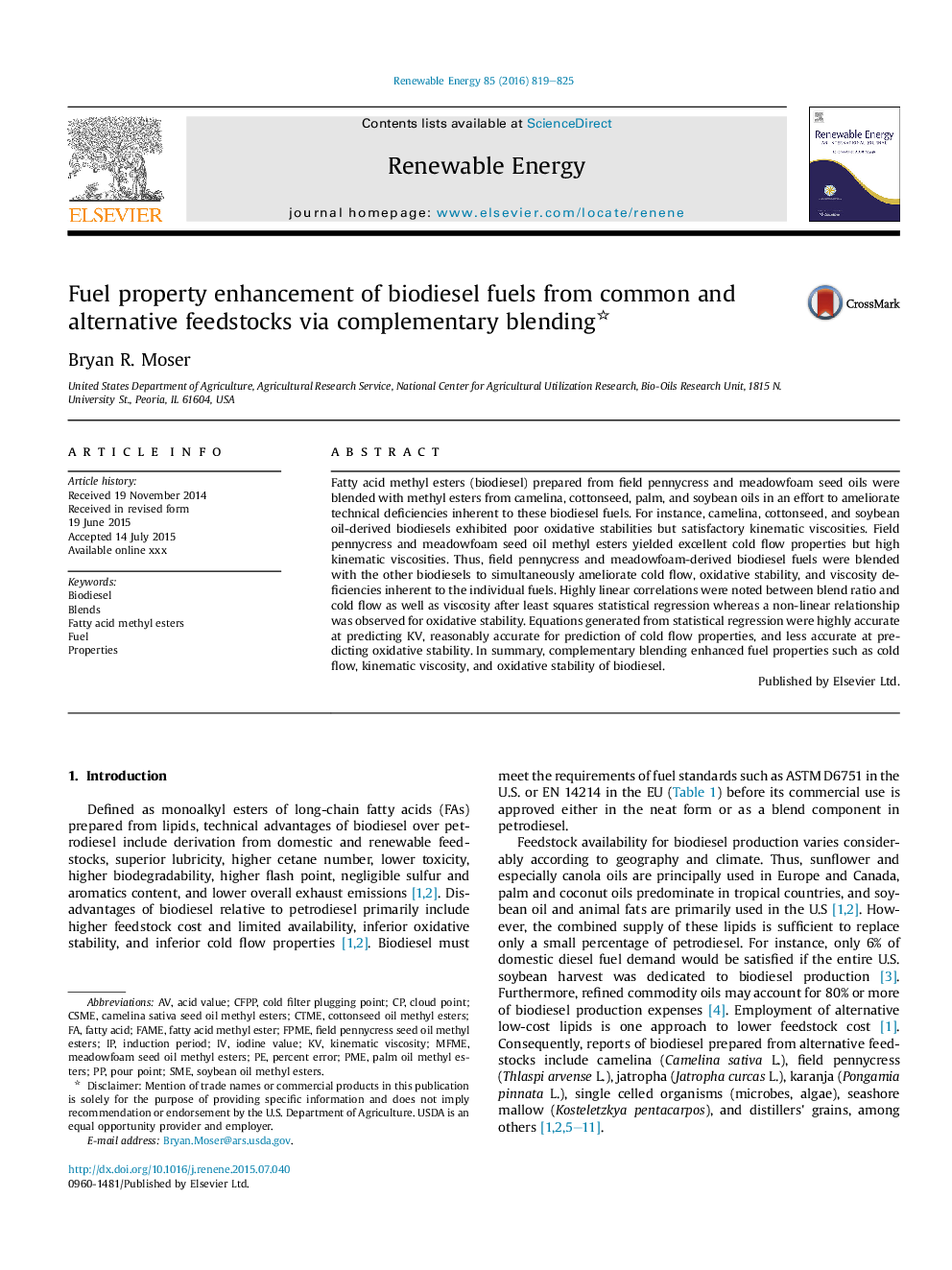| Article ID | Journal | Published Year | Pages | File Type |
|---|---|---|---|---|
| 6766888 | Renewable Energy | 2016 | 7 Pages |
Abstract
Fatty acid methyl esters (biodiesel) prepared from field pennycress and meadowfoam seed oils were blended with methyl esters from camelina, cottonseed, palm, and soybean oils in an effort to ameliorate technical deficiencies inherent to these biodiesel fuels. For instance, camelina, cottonseed, and soybean oil-derived biodiesels exhibited poor oxidative stabilities but satisfactory kinematic viscosities. Field pennycress and meadowfoam seed oil methyl esters yielded excellent cold flow properties but high kinematic viscosities. Thus, field pennycress and meadowfoam-derived biodiesel fuels were blended with the other biodiesels to simultaneously ameliorate cold flow, oxidative stability, and viscosity deficiencies inherent to the individual fuels. Highly linear correlations were noted between blend ratio and cold flow as well as viscosity after least squares statistical regression whereas a non-linear relationship was observed for oxidative stability. Equations generated from statistical regression were highly accurate at predicting KV, reasonably accurate for prediction of cold flow properties, and less accurate at predicting oxidative stability. In summary, complementary blending enhanced fuel properties such as cold flow, kinematic viscosity, and oxidative stability of biodiesel.
Keywords
Related Topics
Physical Sciences and Engineering
Energy
Renewable Energy, Sustainability and the Environment
Authors
Bryan R. Moser,
